The Foundling Hospital, Bloomsbury Fields, London
The Foundling Hospital was founded in 1739 by Captain Thomas Coram for the "education and maintenance of exposed and deserted young children". The first children were admitted on 25th March 1741, into temporary premises in Hatton Garden. A permanent location was subsequently found at Bloomsbury Fields to the west of Gray's Inn Lane. The green-field 56-acre site, part of the Earl of Salisbury's estate, cost £7000, with the Earl donating £500 of this to the Hospital.
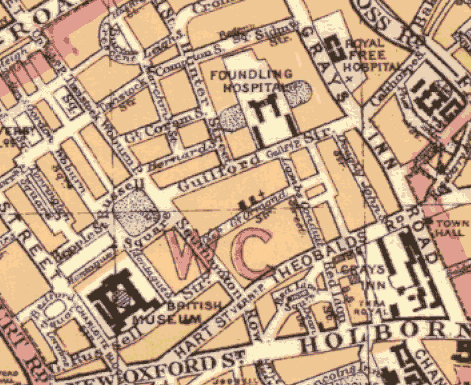
Location of Coram's Foundling Hospital
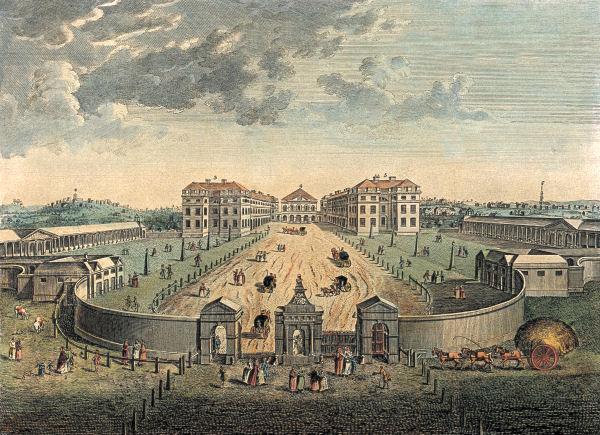
Coram's Foundling Hospital, early view.
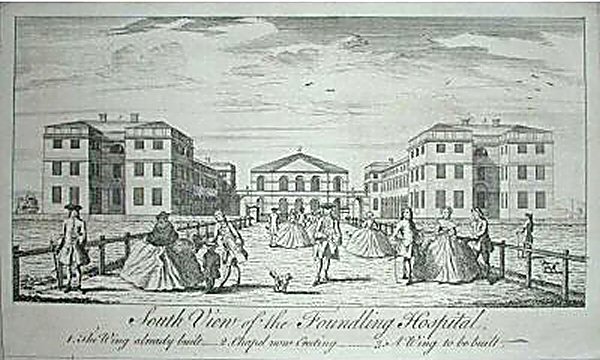
Coram's Foundling Hospital, 1748.
The Hospital became the capital's most popular charity and was supported by the greatest artists of the time such as Reynolds and Gainsborough who donated paintings. Most notable was William Hogarth, who had no children of his own and was a founding Governor. He designed uniforms for the children and the charity's Coat of Arms. He was also an "Inspector for Wet Nurses", and he and his wife Jane fostered foundling children.
The composer Handel gave benefit performances of his work in the Chapel and also provided it with an organ. The music in the chapel on Sundays became a special attraction and the choir, composed of the children themselves, was assisted at various times by most distinguished singers. After morning service on Sundays, visitors were able to see the children at dinner.
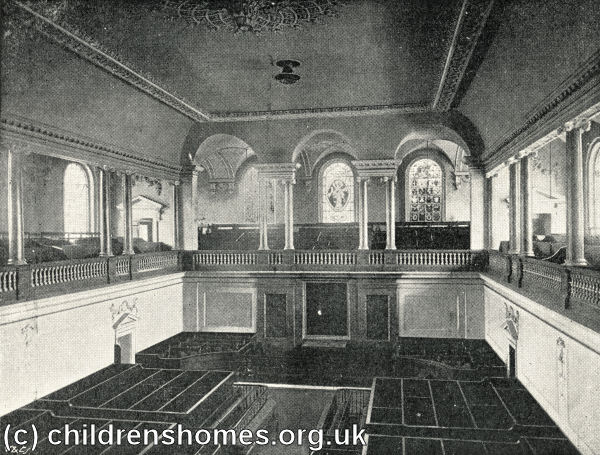
Foundling Hospital Chapel. © Peter Higginbotham
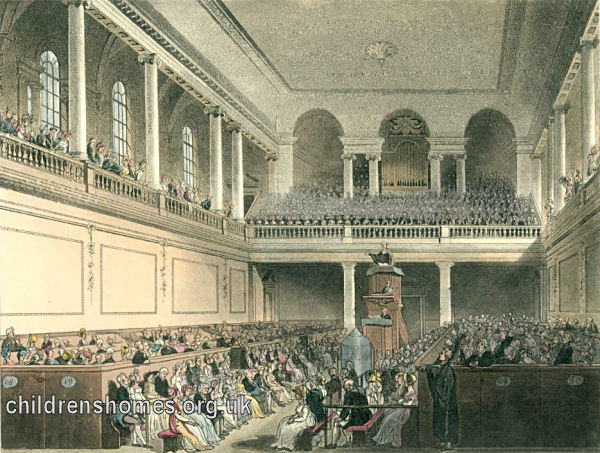
Foundling Hospital Chapel, 1808. © Peter Higginbotham
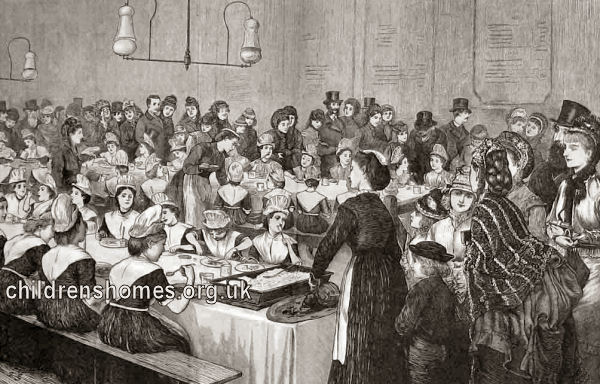
Foundling Hospital Sunday Dinner, 1878. © Peter Higginbotham
The hospital was inundated with applicants and in 1756 it was given a parliamentary grant of £10,000 on condition that any newly born infant was automatically given admission. To cope with the influx, the charity opened branch Hospitals at Ackworth, Aylesbury, Barnet, Chester, Shrewsbury and Westerham. The grant ceased four years later after accusations against the governors of immorality and mismanagement. The last child to be admitted under the terms of the grant was baptised, appropriately, as Kitty Finis. The loss of government funding also led to the closure of all the branch establishments.
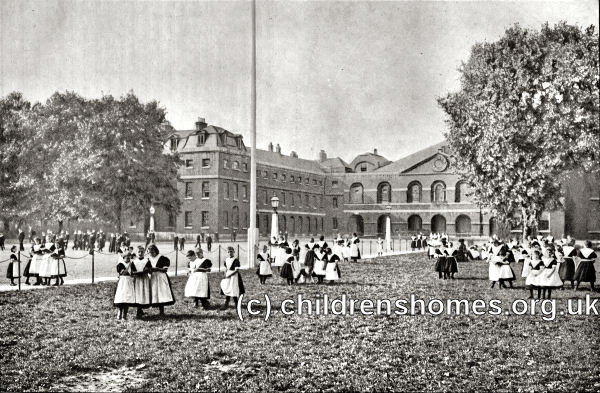
Coram's Foundling Hospital, c.1900. © Peter Higginbotham
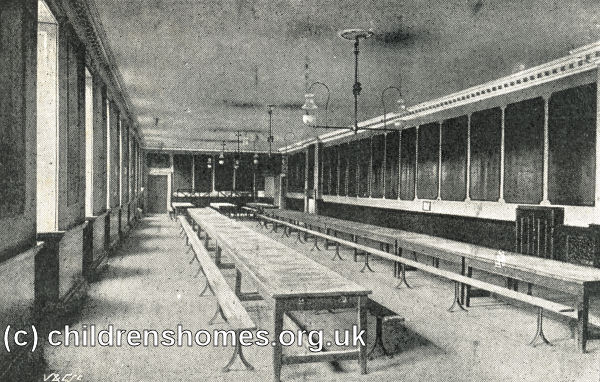
Foundling Hospital Classroom. © Peter Higginbotham
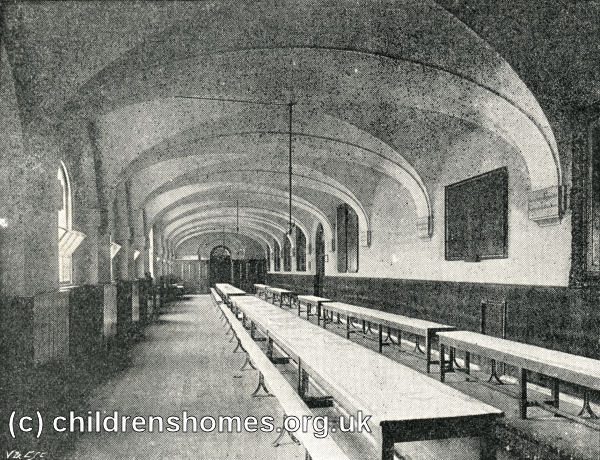
Foundling Hospital Dining Hall. © Peter Higginbotham
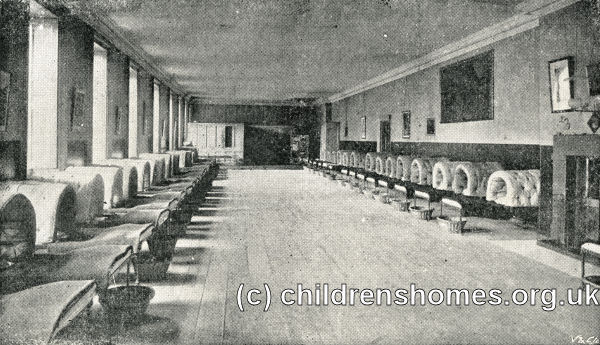
Foundling Hospital Dormitory. © Peter Higginbotham
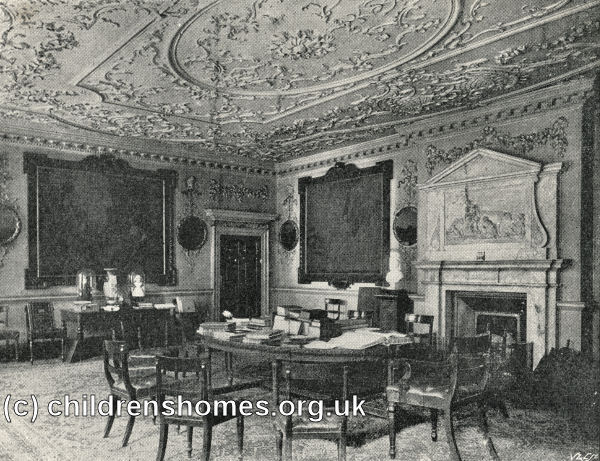
Foundling Hospital Committee Room. © Peter Higginbotham
Those leaving an infant at the Hospital were encourage to leave a distinctive 'token' of some kind, such as a piece of cloth or piece of jewellery. This would allow them to later identify the child as theirs if ever required at some future date, for example if they were accused of having killed it.
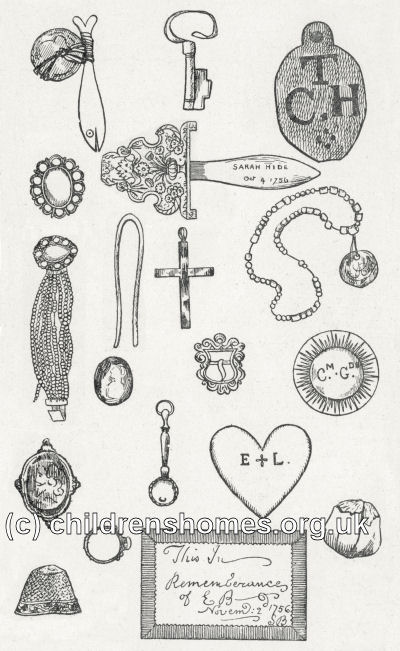
Foundling Hospital typical tokens. © Peter Higginbotham
By the 1920s, the area around the Hospital had become very built-up with an unhealthy atmosphere. In 1926, it was decided to move the institution out of London and the Bloomsbury site was sold for two million pounds to a property developer, with the old buildings then being demolished. Plans were made for new premises on a site at Woodlands Avenue, Berkhamsted. In the interim, the Hospital found temporary accommodation at the St Anne's Society Schools on Redstone Hill at Redhill in Surrey. The Schools had closed in 1919 and had been up for sale at a price of £30,000. The Governors of the St Anne's Society were unwilling to offer a lease on the site, so the Hospital reluctantly purchased it as a reduced price of £25,000.
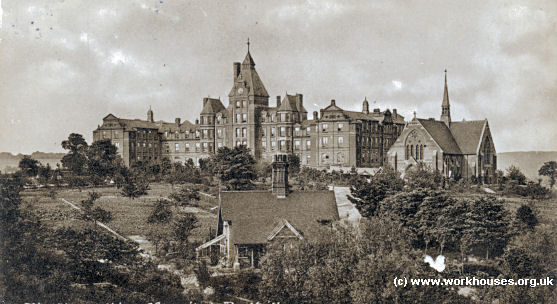
Foundling Hospital at Redhill, c.1927. © Peter Higginbotham
In 1935, what was now called the Foundling Hospital School moved into its magnificent new Georgian-style building at Berkhamsted.
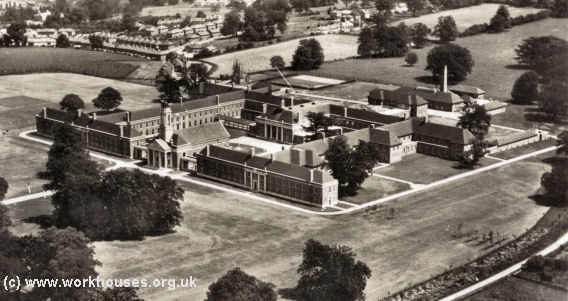
Foundling Hospital School at Berkhamsted, c.1935. © Peter Higginbotham
In 1951, the establishment became Ashlyns School, with responsibility for the educational provision being taken over by Hertfordshire County Council. 1955 effectively marked the end of the Foundling Hospital when the Council purchased the buildings and converted the former living accommodation into extra classrooms and laboratories. All the remaining 'Hospital' children were placed in foster homes
The charity, now known as Coram, continues to this day, aiming to 'provide, develop and promote best practice in the care of vulnerable children, young people and their families.'
The original Bloomsbury site is now 'Coram's Fields' — a park and children's playground. At its northern end, in the charity's later London headquarters, is the Foundling Museum. The Redhill site later became St Anne's home for the age, but the buildings no longer exist. The Berkhamsted premises are still home to Ashlyns School.
Records
Note: many repositories impose a closure period of up to 100 years for records identifying individuals. Before travelling a long distance, always check that the records you want to consult will be available.
- London Metropolitan Archives, 40 Northampton Road, London EC1R OHB. Holdings of Foundling Hospital records include General Registers, Petitions, Baptism Registers, Inspection Books, Nursery Books and Apprenticeship Registers. The LMA have also produced a guide to tracing an individual foundling. Due to the Data Protection Act, registers containing personal information about named individuals remain closed for 110 years.
- Former pupils of the Foundling Hospital and their relatives can request information from closed records by contacting the Adoption and Permanent Families Service at Coram. The Adoption Services at Coram Family also provide a counselling service for anyone who wishes to talk about any aspect of the Foundling Hospitals history that may have affected their lives.
Census
Bibliography
- Allin, David S. The Early Years of the Foundling Hospital 1739/40-1773 (2010, privately published)
- Brownlow, John The History and Design of the Foundling Hospital: With a Memoir of the Founder (1858)
- Higginbotham, Peter Children's Homes: A History of Institutional Care for Britain's Young (2017, Pen & Sword)
- Levene, Alysa Childcare, Health and Mortality in the London Foundling Hospital, 1741-1800: 'Left to the Mercy of the World' (2012, MUP)
- McClure, Ruth Coram's Children: London Foundling Hospital in the Eighteenth Century (1981, Yale University Press)
- Nichols, R.H. and Wray, F.A. The History of the Foundling Hospital (1935, OUP)
- Pugh, Gillian London's Forgotten Children: Thomas Coram and the Foundling Hospital (2011, The History Press)
- Sheetz-Nguyen, Jessica A. Victorian Women, Unwed Mothers and the London Foundling Hospital (2012, Continuum)
Links
- Coram
- The Foundling Museum
- Westerham Founding Hospital 1760-1769 by Alethea Mitchell.
Except where indicated, this page () © Peter Higginbotham. Contents may not be reproduced without permission.


